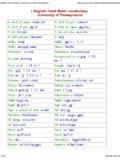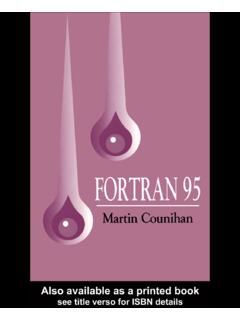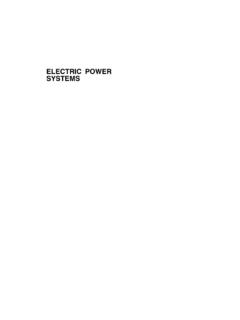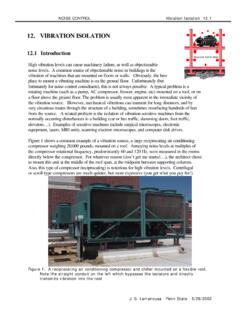Transcription of Guide to Item Analysis - Pennsylvania State University
1 1 Guide to Item Analysis Introduction Item Analysis ( Test Question Analysis ) is a useful means of discovering how well individual test items assess what students have learned. For instance, it helps us to answer the following questions. Is a particular question as difficult, complex, or rigorous as you intend it to be? Does the item do a good job of separating students who know the content from those who may merely either guess the right answer or apply test-taking strategies to eliminate the wrong answers? Which items should be eliminated or revised before use in subsequent administrations of the test? With this process, you can improve test score validity and reliability by analyzing item performance over time and making necessary adjustments.
2 Test items can be systematically analyzed regardless of whether they are administered as a Canvas assignment or if they are submitted as bubble sheets to Scanning Services. With this Guide , you ll be able to Define and explain the indices related to item Analysis . Locate each index of interest within Scanning Services Exam Analysis reports. Identify target values for each index, depending upon your testing intentions. Make informed decisions about whether to retain, revise, or remove test items. Anatomy of a Test Item In this Guide , we refer to the following terms to describe the items (or questions) that make up multiple-choice tests. 1. Stem refers to the portion of the item that presents a problem for the respondents (students) to solve 2.
3 Options refers to the various ways the problem might be solved, from which respondents select the best answer. a. Distractor is an incorrect option. b. Key is a correct option. Figure 1: Anatomy of a test item 2 Item Analysis in Canvas By default, the quiz summary function in Canvas shows average score, high score, low score, standard deviation (how far the values are spread across the entire score range), and average time of quiz completion. This means that, after the quiz has been administered, you automatically have access to those results, and you can sort those results by Student Analysis or Item Analysis . The Canvas Doc Team offers a number of guides on using these functions in that learning management system.
4 Click on Search the Canvas Guides under the Help menu and enter Item Analysis for the most current information. Item Analysis in Scanning Services Scanning Services offers an Exam Analysis Report (see example) through its Instructor Tools web site. Learn how to generate and download the report at Scanning Services Instructor Tools Help. Four Steps to Item Analysis Item Analysis typically focuses on four major pieces of information: test score reliability, item difficulty, item discrimination, and distractor information. No single piece should be examined independent of the others. In fact, understanding how to put them all together to help you make a decision about the item s future viability is critical.
5 Reliability Test Score Reliability is an index of the likelihood that scores would remain consistent over time if the same test was administered repeatedly to the same learners. Scanning Services Exam Analysis Report uses the Cronbach's Alpha measure of internal consistency, which provides reliability information about items scored dichotomously ( , correct/incorrect), such as multiple choice items. A test showing a Chronbach s Alpha score of .80 and higher has less measurement error and is thus said to have very good reliability. A value below .50 is considered to have low reliability. Item Reliability is an indication of the extent to which your test measures learning about a single topic, such as knowledge of the battle of Gettysburg or skill in solving accounting problems.
6 Measures of internal consistency indicate how well the questions on the test consistently and collectively address a common topic or construct. In Scanning Services Exam Analysis Report, next to each item number is the percentage of students who answered the item correctly. To the right of that column, you ll see a breakdown of the percentage of students who selected each of the various options provided to them, including the key (in dark grey) and the distractors (A, B, C, D, etc.). Under each option, the Total (TTL) indicates the total number of students who selected that option. The Reliability coefficient (R) value shows the mean score (%) and Standard Deviation of scores for a particular distractor.
7 3 Figure 2: Item number and percentage answered correctly on Exam Analysis Report How would you use this information? Score Reliability is dependent upon a number of factors, including some that you can control and some that you can t. Factor Why it s important Length of the test Reliability improves as more items are included. Proportion of students responding correctly and incorrectly to each item Helps determine item reliability. Item difficulty Very easy and very difficult items do not discriminate well and will lower the reliability estimate. Homogeneity of item content Reliability on a particular topic improves as more items on that topic are included. This can present a challenge when a test seeks to assess a lot of topics.
8 In that case, ask questions that are varied enough to survey the topics, but similar enough to collectively represent a given topic. Number of test takers Reliability improves as more students are tested using the same pool of items. Factors that influence any individual test taker on any given day Preparedness, distraction, physical wellness, test anxiety, etc. can affect students ability to choose the correct option. What should you aim for? Reliability coefficients range from to Ideally, score reliability should be above Coefficients in the range are considered to be very good for course and licensure assessments. 4 Difficulty Item Difficulty represents the percentage of students who answered a test item correctly.
9 This means that low item difficulty values ( , 28, 56) indicate difficult items, since only a small percentage of students got the item correct. Conversely, high item difficulty values ( , 84, 96) indicate easier items, as a greater percentage of students got the item correct. As indicated earlier, in Scanning Services Exam Analysis Report, there are two numbers in the Item column: item number and the percentage of students who answered the item correctly. A higher percentage indicates an easier item; a lower percentage indicates a more difficult item. It helps to gauge this difficulty index against what you expect and how difficult you d like the item to be. You should find a higher percentage of students correctly answering items you think should be easy and a lower percentage correctly answering items you think should be difficult.
10 Item difficulty is also important as you try to determine how well an item worked to separate students who know the content from those who do not (see Item Discrimination below). Certain items do not discriminate well. Very easy questions and very difficult questions, for example, are poor discriminators. That is, when most students get the answer correct, or when most answer incorrectly, it is difficult to ascertain who really knows the content, versus those who are guessing. Figure 3: Item number and item difficulty on Exam Analysis Report How should you use this information? As you examine the difficulty of the items on your test, consider the following. 1. Which items did students find to be easy; which did they find to be difficult?







